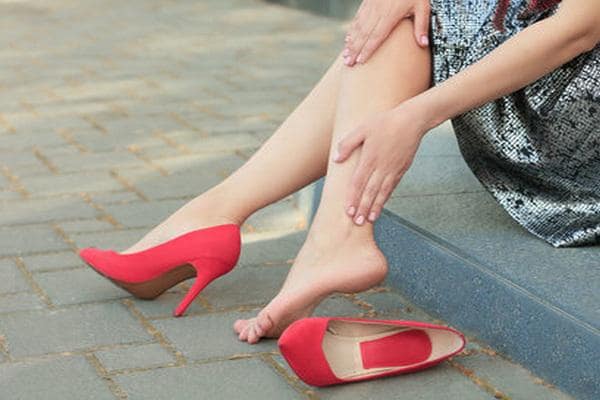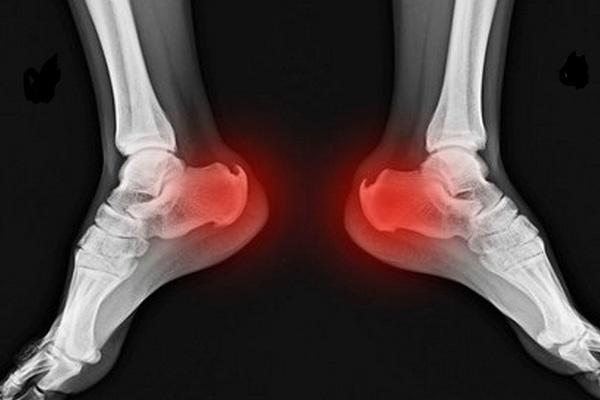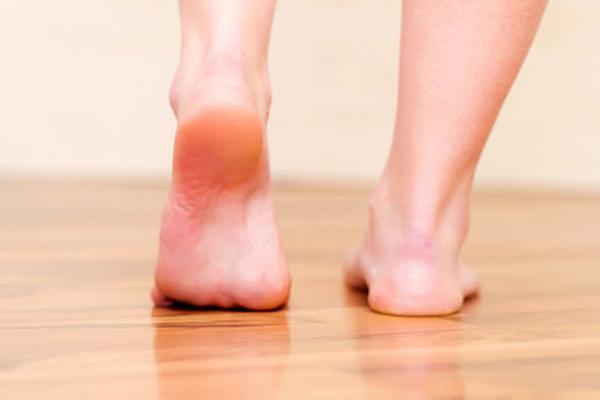Зміст
Heel pain when walking can be very unpleasant, especially since we perform many activities throughout the day that overload our legs. Uncomfortable shoes, standing up, being overweight or obese are some of the most common causes of heel pain. However, this ailment can also indicate serious degenerative changes, so it should not be underestimated. One of the serious conditions associated with heel pain when walking is a heel spur, which can interfere with normal movement. So, let’s go to an orthopedist who will determine what causes heel pain and how to deal with it.
Heel pain when walking can be very unpleasant, especially since we do many activities throughout the day that overload our legs. Uncomfortable shoes, standing up, being overweight or obese are some of the most common causes of heel pain. However, this ailment can also indicate serious degenerative changes, so it should not be underestimated. One of the serious conditions associated with heel pain when walking is a heel spur, which can interfere with normal movement. So, let’s go to an orthopedist who will determine what causes heel pain and how to deal with it.
Heel pain: Bad habits

Heel pain is a fairly common ailment, because it is on them that the weight of the whole body falls. As a result, they are constantly exposed to injury and stress. Pain, burning, or tingling in the heels may occur intermittently, most often after walking or standing for a long time. Intensive lifestyles, including sports that overload the legs such as jogging and weightlifting, are particularly conducive to disease. Heel pain often occurs in people who work while standing.
Another cause of pain is wearing uncomfortable or too small shoes or wearing high heels. The shoes should be adjusted to properly support the arches of our feet. It is also important that the legs are cushioned and properly positioned. Flexion of the foot puts pressure on the calcaneal ligaments and stretches them. Heels are also negatively affected by excess weight and obesity,
Heel pain: Flat feet
Flat feet The heels can also hurt due to defects in posture, such as flat feet. This is a deformation of the arch of the foot, their lowering (so that the foot sticks to the ground) and a deterioration in flexibility and resistance to stress. Uneven weight distribution will impair walking. Pain is also felt when walking on the underside of the foot. Flat feet can be caused by birth defects, muscle contracture, or excessive tension, such as being overweight.
Heel pain: Heel spur
A heel spur is a very serious condition that causes heel pain. This is a consequence of the plantar fascia, which constantly tenses and relaxes when walking. When he is subjected to even more stress, such as injury or strain, inflammation occurs. This leads to the deposition of calcium deposits and the formation of growths on the calcaneus, i.e. spurs. Because of it, aponeurosis develops, making it impossible to move freely.
At first, pain accompanies walking, but over time it can appear even when lying and sitting. Overweight people with lower limb defects (flat feet, hallux valgus) and those who work while standing are at risk of heel spur formation. Also, this disease is facilitated by sports that cause stress on the legs (volleyball, tennis, running).
How to deal with heel pain?

When heels hurt, it is worth getting rid of the disease as soon as possible so that it does not interfere with our daily functioning. It is helpful to soak your feet in a solution of gray soap, cool the heels, and massage to improve blood circulation in the lower limb. You should also wear comfortable shoes that fit the shape of your foot and have a not too stiff sole. If you are overweight or obese, it is recommended that you lose weight to relieve your heels.
If heel pain persists, see a podiatrist, who will determine the cause of the ailment and prescribe appropriate treatment and rehabilitation exercises. Orthopedic insoles can also be worn for ailments in the heel area to reduce uneven body weight distribution. Treatment also includes physical therapy in the form of ultrasound, cryotherapy, or laser therapy. Sometimes surgery is needed to remove the rash.








